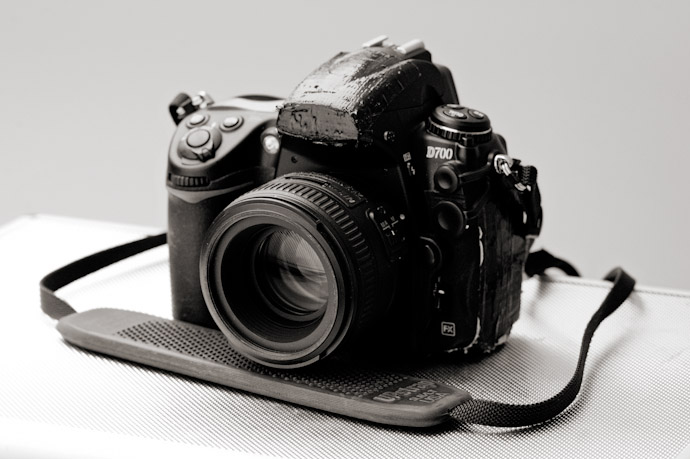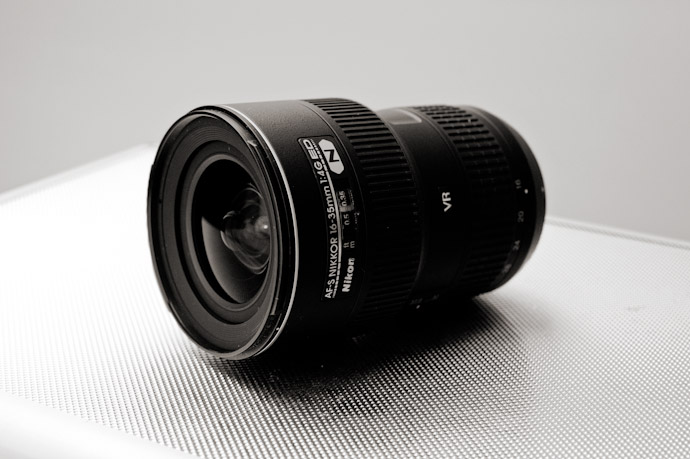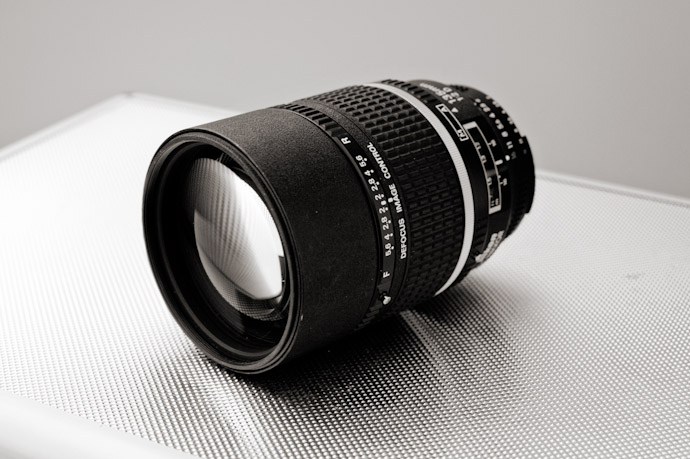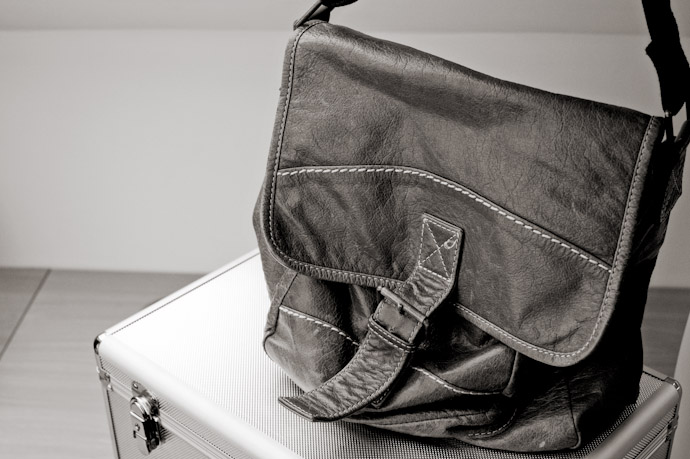Before I go into the equipment I use during commissions, I would like to stress that the creation of a good photograph, on the whole, has very little to do with the equipment that is used. Many wedding photographers and enthusiasts get completely held up on equipment, commonly known as ‘gear lust’, which sees them buy just about whatever their favourite camera manufacturer makes.
This regular switching can be quite detrimental to a photographer's development; not only in terms of their portfolio but financially too, continually believing that the more expensive or 'professional' the camera and lens, the better the image. Instead, the camera and lens are merely a tool to serve the artist – as I mentioned in part two.
The amount of weddings I attend where the guests are using cameras two and a half times the size of mine, plus a ‘rocket launcher’ lens, is scary. Quite funny too, until I get the bride phoning me up because she has seen the poor quality photography, probably on Facebook, that these amateurs produce and I then have to reassure her that my photography will be in a different league.
There's an old saying that only amateurs can afford the professional kit. Well, I'll give you one piece of advice that I rarely see on the blogs or forums and might just save you a penny or two:
Get ONE camera and ONE prime lens. Buy nothing else until you are so familiar with them that, even without the camera to your eye, you start to see the world in a series of 35mm/50mm images (or whatever focal length you invest in).
This industry is simply full of too many ex-IT professionals obsessed with these tiny little computer thingies that make images. The photographer's ability, or opinion and stance on image-making, is an absolute priority and should not be underestimated. If you don't know how to practice your craft or haven't spent the time learning what makes a good photograph and applying your own unique style, no amount of kit is going to help you.
As mentioned in previous posts I am asked during a wedding, on a flatteringly frequent number of occasions, how I know the bride and groom. This is perfect. Being ‘accepted’ at a wedding is key to creating highly personal photography for your clients. I choose to shoot with small cameras and small, prime lenses and this is mostly so I can blend in with the wedding guests. These are the tools that suit the task I am performing (other photographers may vary) but they don't form the foundation of my ability.
I can, and have often, used different types of kit and equipment but still produced images that are unique to my approach. By being very ‘non-wedding photographer’ I can get in very close without making people feel awkward, to capture those incredibly unique images. For instance, one thing I like to do is shoot from people’s perspectives – over shoulders or close in and along a sightline perhaps – which gives the image an additional layer of interpretation. I’m not sure I could achieve this with a big 70-200 telephoto zoom.
I believe many zoom-based photographers, certainly not all, but the majority, get lazy and fail to maintain the discipline needed to establish and hold on to a rapport with their subjects. It’s easy to stand at a distance to get shots but the issue is that you become detached from the wedding and then, when you do actually need to move in closer for an image, your failure to maintain rapport prevents you from getting a convincing and quality reportage image. Essentially you’re not accepted as part of the wedding and remain to be seen as a ‘supplier’.
Seriously, it's easy to lambast these lenses because they are probably the most popular lenses in the wedding industry. They are mostly exceptional in terms of optics and build quality and in the right hands, they can be used to capture some stunning imagery – including reportage wedding photography. However, because they encourage laziness they’re probably the single biggest contribution to ‘snapshot wedding photography’; the industry’s vast quantities of isolated headshots devoid of any narrative or soul. People need to simplify their set up. I know many a wedding photographer that has a kit bag, and car boot, full of ‘just in case’ equipment; lenses covering every mm from 16 through to 200. I'll be bold here and say this is simply unnecessary and actually clouds the whole point of what it is to be a reportage photographer; simple storytelling. By simplifying your kit you take this unwanted emphasis away from the equipment and place it exactly where it should be, on producing exceptional images.
During a typical commission, I use a 50mm and a 24mm. Over time I have mastered these single focal distances and perspectives to the point where I can see the image without lifting the viewfinder to my eye. I’m not constantly walking back and forth either, which I get asked frequently by photographers considering a switch to primes. Instead, because I’m completely tuned into the event, as opposed to standing on the sidelines picking people off with a telephoto, I can predict when things are going to happen, when the ‘decisive moment’ will occur and ultimately when to create the best, most thought-provoking and inspiring photograph for my customers. For reference, Part Two of this series features 31 images and of this 31, 17 were taken with the 50mm lens and 14 with the 24mm.
The two Nikon D700 cameras that I’ve been using for the best part of a year have been, on the whole, pretty faultless. I’ve dropped them, kicked them, used them at their absolute maximum capabilities and they’ve still produced the goods. To my amazement, I produced a shot at 12,800 ISO during a winter wedding and in the final cut, it sat side by side with 1600 ISO images, with no significantly noticeable differences. I couldn’t have dreamt of this back in the days of film, or when using the Canon 5D Mark 2 at 6400 ISO, for that matter. They are excellent tools and I am totally convinced that I took the right decision to make the switch from Canon last May.
In addition to the 24mm and 50mm, I do possess a 135mm however it rarely comes out of the bag, probably one in ten weddings. I mainly use the 135mm for portraiture commissions, often alongside the 50mm. But portrait commissions are in no way, shape or form like weddings as they’re fairly one dimensional in terms of narrative and context.
I do have a 16-35mm zoom that I use as a backup. Very occasionally I need to go down to one camera, one lens setup. City weddings for instance often require me to be on foot; in and out of taxis, Route Masters, tube stations – the 16-35 helps me to remain inconspicuous and my way of working remains unchanged. If I’m using flash I may also go down to the one camera and the 16-35. Whenever I do use the 16-35 I always try and use set focal ranges to retain consistency within a body of work, for instance, 24mm and 35mm.
There is without a doubt a lot of good quality, affordable equipment out there. I fully appreciate that this perhaps creates a particularly daunting task for someone looking to start up, even just to upgrade. So just remember, the key to all of this, the bottom line - they're just tools. They should enable photographers to work how they want, they should complement a photographic approach, nothing more. The sooner you learn as a photographer that the key is your 'eye' and not your kit, the better.
Nikon D700 with 50mm AF-S NIKKOR 1.4G and Upstrap
Nikon D700 with 24mm AF-S NIKKOR 1.4G ED and Upstrap
16-35mm AF-S NIKKOR 4G ED
135mm AF DC NIKKOR 2D
Nikon Speedlight SB600 x2
Inconspicuous Manbag
Take a look through my wedding portfolio or read up about my reportage style.






































